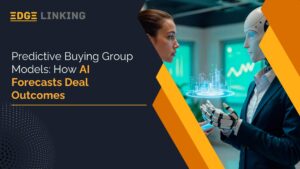Artificial Intelligence (AI) is changing how we live and work, influencing our daily interactions and technology interactions. From tailored suggestions on streaming services to autonomous cars roaming the streets, AI is increasingly becoming a part of everyday life. However, the real driver of this change is data.
Often seen as the “fuel” that keeps AI running, data is essential for every advancement we notice today. It allows machines to learn, adjust, and take on tasks once seen as purely human activities. Without data, AI would be like a vehicle without fuel—full of promise but stuck in one place.
This blog will examine the exciting connection between data and AI. We’ll discuss how data leads to AI progress, why having good-quality data matters, and the difficulties with this partnership. We’ll also highlight practical examples and share valuable tips on how businesses can leverage the strengths of both AI and data to stay competitive in a rapidly changing tech world.
Whether you’re a business executive, a technology fan, or just someone curious about how AI functions, this article aims to clarify why data is more than just a part of AI’s success—its foundation. Let’s explore the relationship between data and AI, a collaboration driving the future of innovation.
What is Data?
Data refers to information collected, observed, or measured. It can exist in various formats, such as numbers, text, images, or sounds. For example:
- Quantitative Data: Includes measurable information like sales figures, temperature readings, or website clicks.
- Qualitative Data: Includes descriptive information like customer reviews, survey feedback, or video content.
In our modern digital world, the amount of data produced is enormous. New data gets created whenever you visit a website, share something on social media, or track your workouts with an app. This rapid increase in information is commonly called “big data.”
Three key features characterize big data:
- Volume: The sheer quantity of data being generated every second.
- Variety: Data comes in structured, unstructured, and semi-structured forms.
- Velocity: The speed at which data is generated and processed.
This vast pool of data forms the foundation on which AI systems operate.
What is Artificial Intelligence?
Artificial Intelligence is all about mimicking human smarts in machines. These AI systems can identify pictures, understand what people say, suggest ideas, and even drive vehicles. But it’s important to note that AI doesn’t do its job alone; it depends heavily on data to work well.
There are several types of AI, including:
- Machine Learning (ML): Enables systems to learn from data and improve without explicit programming. For example, email spam filters learn from user feedback to identify unwanted messages.
- Natural Language Processing (NLP) Helps AI understand and generate human language, such as in chatbots or virtual assistants.
- Computer Vision: Allows AI to analyze and interpret visual information, like facial recognition or object detection.
The ability of AI to perform these tasks depends entirely on the quality and quantity of the data it processes.
How AI Relies on Data
AI and data share a symbiotic relationship. Here’s how data powers AI systems:
-
Training AI Models
Training is the process by which AI learns from data. For example, to create an AI system that identifies cats in photos, you provide a dataset containing thousands of images labeled as “cat” or “not a cat.” The system analyzes the patterns in these images, such as shape, fur texture, and eyes, to learn what a cat looks like.
-
Making Predictions
AI systems use data to make predictions or decisions. For instance, predictive maintenance in factories relies on AI to analyze equipment data, identifying potential failures before they happen.
-
Improving Over Time
AI models improve with more data, a process called “continuous learning.” For example, self-driving cars constantly gather new data from their surroundings, which helps refine their algorithms and make safer driving decisions.
-
Customizing User Experiences
AI uses data to personalize experiences. Streaming platforms like Netflix analyze your viewing history to recommend movies or shows you might enjoy.
Why Data Quality Matters
Not all data is useful for AI. High-quality data ensures that AI systems deliver accurate and meaningful results. Here’s why data quality is critical:
- Accuracy: Errors or inconsistencies in data can lead to flawed AI outcomes. For example, incorrect weather data could make an AI-powered weather app unreliable.
- Diversity: To prevent bias, data should cover a wide range of scenarios. For instance, an AI voice recognition system should be trained on voices with different accents, genders, and tones.
- Relevance: AI systems perform better when data aligns closely with the problem they are solving.
Types of Data Used in AI
AI systems process different types of data depending on the task at hand. The three main categories include:
- Structured Data: Highly organized and easy to analyze, like customer databases or financial spreadsheets.
- Unstructured Data: Includes free-form information like videos, emails, or social media posts. This type of data is more challenging to process but holds immense value.
- Semi-structured Data: A mix of both, such as JSON files or XML documents, where data has some organization but lacks a fixed structure.
Challenges in the Data-AI Relationship
While the link between data and AI is powerful, it comes with challenges:
-
Data Privacy and Security
With AI depending on personal and sensitive information, worries about privacy have increased. Laws such as the GDPR and CCPA set tight guidelines for collecting and using data, which may restrict the amount of data available for training AI systems.
-
Bias in Data
When the data used for training shows existing biases, AI systems are likely to copy those biases. For instance, if a hiring algorithm learns from biased recruitment data, it may prefer male candidates instead of female ones.
-
Data Management Overhead
Handling and tracking large amounts of data requires a lot of resources. It can feel like a lot to handle when you have to manage data flows, maintain data quality, and deal with growth challenges.
-
Data Quality Issues
Incomplete or old data can lead to incorrect conclusions. Preparing data for AI usually requires a lot of hard work, but this step is important for achieving good results.
Real-World Applications of AI and Data
The partnership between AI and data drives innovation across industries. Here are some notable examples:
-
Healthcare
AI systems that learn from patient information can find diseases at an early stage. IBM’s Watson is a good example, which reviews medical records to help doctors identify health issues and recommend treatments.
-
Retail
Big online retailers such as Amazon use AI to suggest products, set prices, and manage stock, all based on customer information.
-
Transportation
Ride-sharing apps like Uber use AI to efficiently match drivers with riders, optimize routes, and estimate arrival times, all based on real-time data.
-
Finance
AI-driven fraud detection systems analyze transaction data to identify unusual activities, protecting consumers and businesses.
The Future of AI and Data
The relationship between AI and data will continue to evolve as technology advances. Here are some emerging trends:
– AI in Data Management
AI is increasingly used to handle data-related tasks, such as cleaning datasets, detecting anomalies, or identifying trends in unstructured data.
– Synthetic Data
When real-world data is limited or sensitive, synthetic data generated by AI can substitute, providing diverse and high-quality training datasets.
– Edge AI and Real-Time Data Processing
Edge AI enables devices to process data locally, reducing reliance on centralized systems. This is particularly useful for IoT devices and autonomous vehicles that need to analyze data in real time.
How Businesses Can Leverage AI and Data
If you’re a business looking to capitalize on AI, here’s a step-by-step guide:
- Set Clear Objectives: Define the problem you want AI to solve.
- Invest in Data Collection: Use reliable tools to gather accurate, diverse, and relevant data.
- Ensure Data Security: Comply with data protection laws to maintain user trust.
- Choose the Right AI Tools: Leverage AI platforms that align with your business goals.
- Monitor Performance: Continuously evaluate and update your AI models to improve accuracy.
Wrapping it up –
Data and Artificial Intelligence go hand in hand, creating new ideas in many fields. Data helps AI learn and improve, while AI takes that data and turns it into useful information. To take advantage of this, companies need to pay attention to the quality of their data, tackle issues like bias and privacy, and keep up with new technologies.
As AI and data tools improve, they offer amazing opportunities to address tough challenges, improve customer satisfaction, and boost growth. Whether you run a business, write code or just love technology, it’s important to understand how data and AI connect to navigate this exciting new world.






